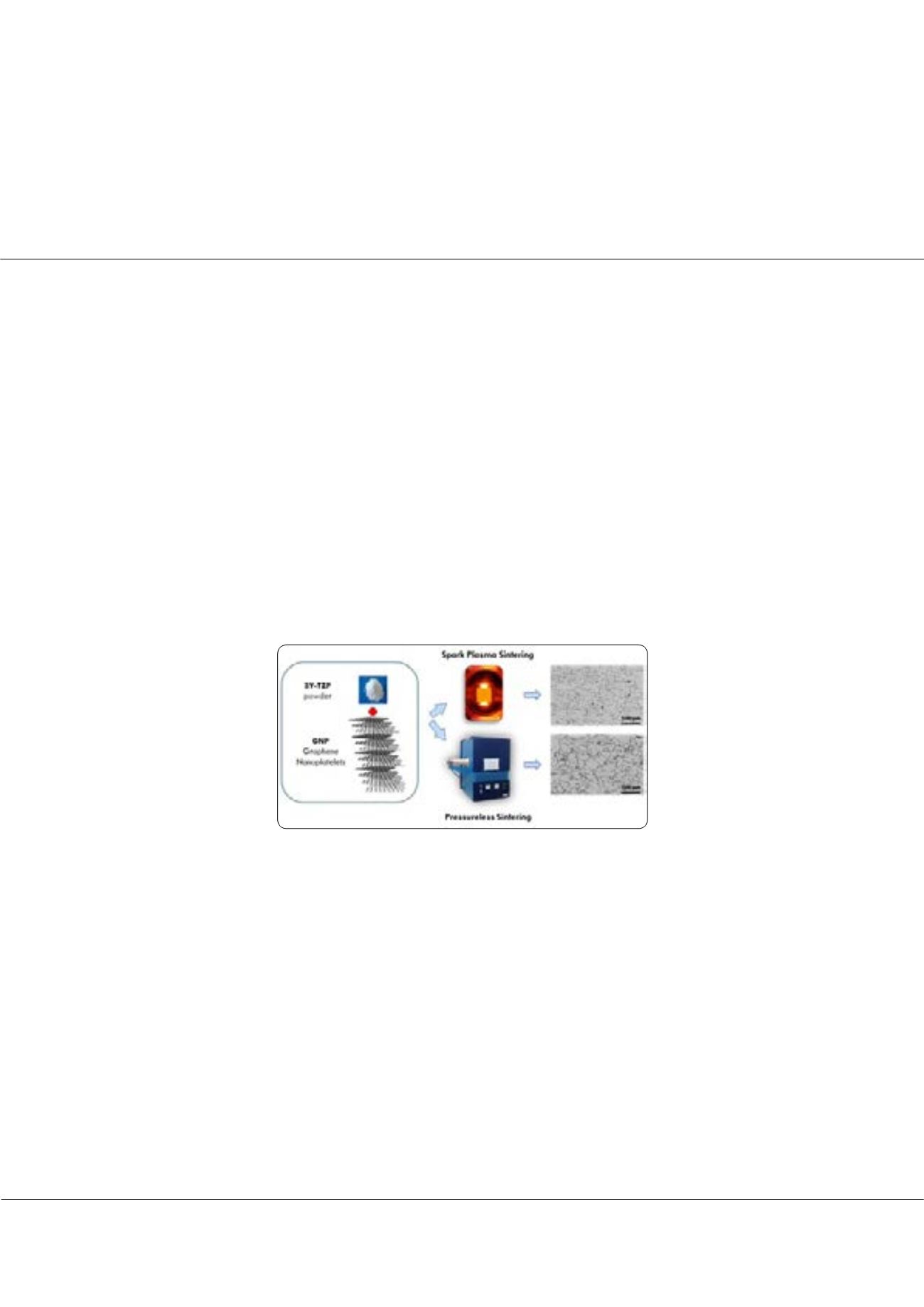

Page 46
conferenceseries
.com
Volume 6
Research & Reviews: Journal of Material Sciences
ISSN: 2321-6212
Ceramics 2018
May 14-15, 2018
May 14-15, 2018 | Rome, Italy
4
th
International Conference and Expo on
Ceramics and Composite Materials
Role of sintering method on graphene/3YTZP composites
C. López-Pernía, R. Poyato, A.Morales-Rodríguez
and
A.Gallardo-López
Universidad de Sevilla, Spain
G
raphene in the form of graphene nanoplatelets (GNP), graphene oxide or few layer graphene has become an ideal filler
in fabrication of different polymer, metal or ceramic composites. Recently, the fabrication of ceramic matrix composites
with graphene-based materials has attracted a special interest due to the potential improvement of mechanical and functional
properties. Amongst ceramic matrices, 3 mol% yttria tetragonal zirconia (3YTZP) presents outstanding mechanical properties
and with the addition of GNP can become electrically conductive. The properties of the materials depend not only on the
composition, but also on the microstructure. In the case of ceramics, the processing method has a great importance from the
point of view of the final properties. Graphene / ceramic composites are typically prepared through wet powder processing
followed by a pressure assisted sintering technique, such as Spark Plasma Sintering (SPS) or Hot Pressing (HP). SPS advantages
over HP include lower sintering temperatures and shorter sintering times. However, it requires expensive equipment and
produces highly anisotropic materials. Conventional pressureless sintering (PLS) is a simpler and cheaper sintering method
that produces composites with lower anisotropy. Therefore, the study of graphene / ceramic composites prepared by PLS
compared to SPS sintered ones is very interesting. The main objective of this work is to make a direct comparison of the
effects of these two sintering techniques (PLS and SPS) on the microstructural features, mechanical and electrical properties of
composites of 3YTZP with different contents of GNPs.
Recent Publications
1.
L. S. Walker, V. R. Marotto, M. A. Rafiee, N. Koratkar, and E. L. Corral, “Toughening in Graphene Ceramic Composites,” ACS
Nano, vol. 5, no. 4, pp. 3182–3190, 2011.
2.
S. Ramesh, M. Mohaymen Khan, H. C. Alexander Chee, Y. H. Wong, P. Ganesan, M. G. Kutty, U. Sutharsini, W. J. Kelvin Chew,
and A. Niakan, “Sintering behaviour and properties of graphene oxide-doped YTZP ceramics,” Ceram. Int., vol. 42, no. 14,
pp. 17620–17625, 2016.
3.
A. Gallardo-López, I. Márquez-Abril, A. Morales-Rodríguez, A. Muñoz, and R. Poyato, “Dense graphene nanoplatelet/yttria
tetragonal zirconia composites: Processing, hardness and electrical conductivity,” Ceram. Int., vol. 43, no. 15, pp. 11743–
11752, Oct. 2017.
4.
C. Ramirez, P. Miranzo, M. Belmonte, M. I. Osendi, P. Poza, S. M. Vega-Diaz and M. Terrones."Extraordinary toughening
enhancement and flexural strength in Si3N4composites using graphene sheets".J. Eur. Ceram. Soc.,34,pp. 161–169,
2014.Gg5.
F. Chen, D. Jin, K. Tyeb, B. Wang, Y. H. Han, S. Kim, J. M. Schoenung, Q. Shen, and L. Zhang, “Field assisted sintering of
graphene reinforced zirconia ceramics,” Ceram. Int., vol. 41, no. 4, pp. 6113–6116, 2015.
Biography
Cristina López Pernía is a doctoral candidate at the Department of Condensed Matter at Universidad de Sevilla. She graduated with a Bachelor of Materials Engineering from Universidad
Politécnica de Madrid and holds a Master’s Degree in
Advanced Materials
from Universidad Autónoma de Madrid. Currently she focuses her work on graphene-ceramic composites.
cristinalopez@us.esC. López-Pernía et al., Res. Rev. J Mat. Sci. 2018, Volume 6
DOI: 10.4172/2321-6212-C1-014
















